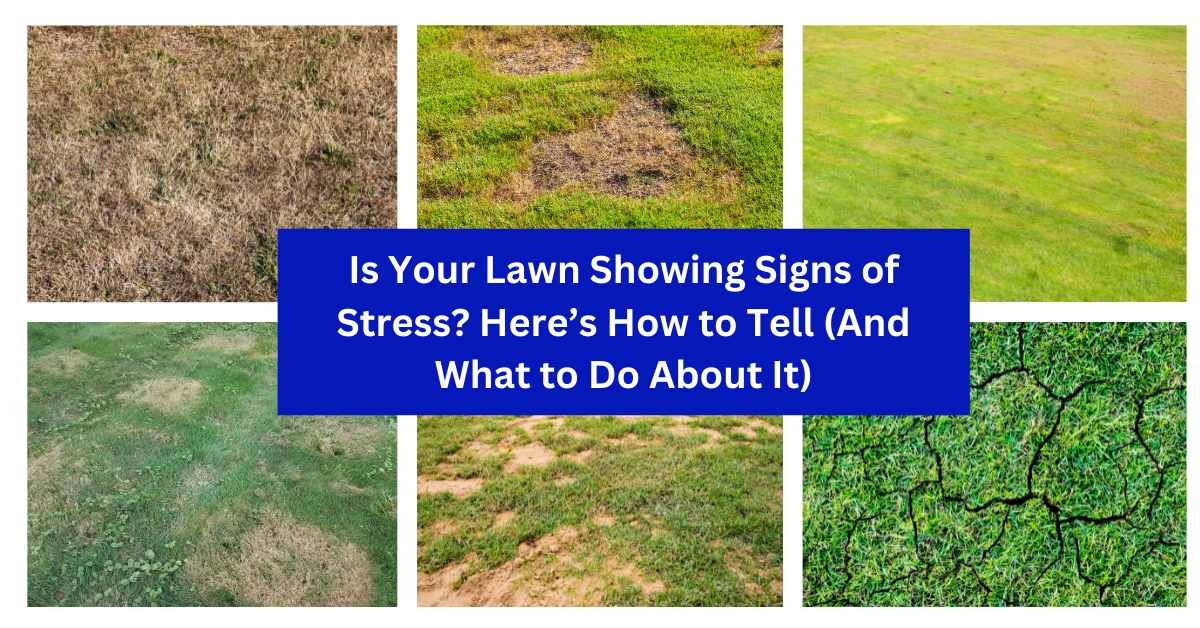
July in Alberta is peak lawn season—but it’s also when your grass is most likely to struggle. Lawn stress in summer is common across Calgary and Red Deer due to heat, dry conditions, and heavy foot traffic. If your turf is starting to look patchy, dull, or tired, it could be crying out for help.
In this blog, we’ll walk you through the top signs your lawn is under stress, what might be causing it, and how to get things back on track—whether you’re a DIYer or looking for some expert support.
Common Signs of Lawn Stress in Summer
Your lawn can’t talk—but it will show you when it’s not happy. Look for these early warning signs:
1. Footprints That Don’t Bounce Back
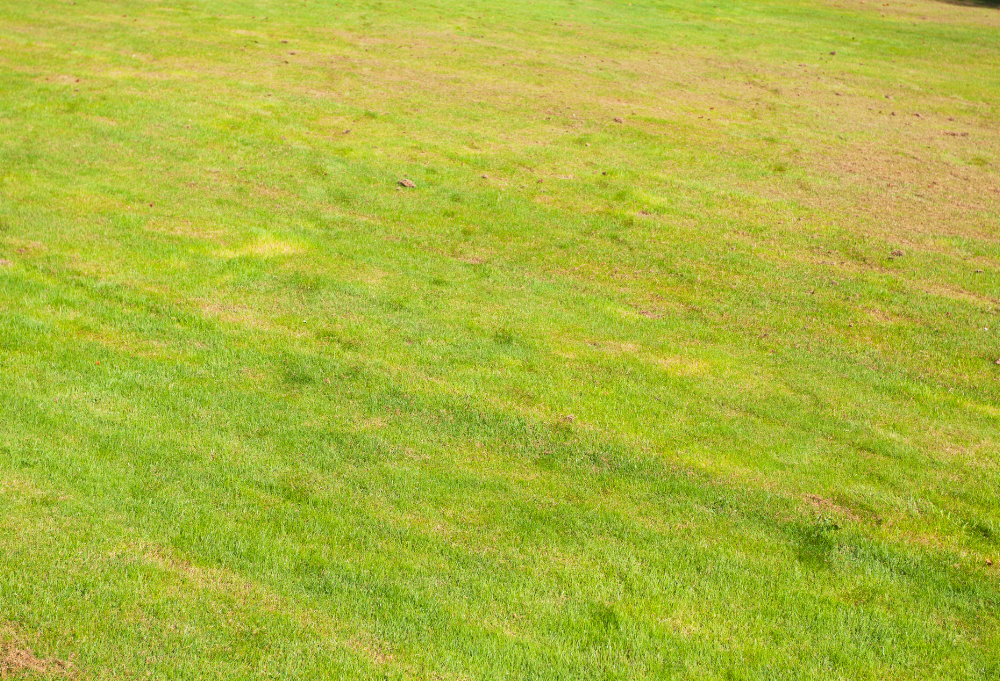
If you walk across your grass and see your footprints remain hours later, it means the blades are dehydrated and lacking elasticity. This is a classic indicator of drought stress.
2. Browning or Yellowing Patches
Not all discolouration is caused by weeds. Uneven watering, heat stress, or soil compaction can lead to patchy browning—even if you’re mowing and watering regularly.
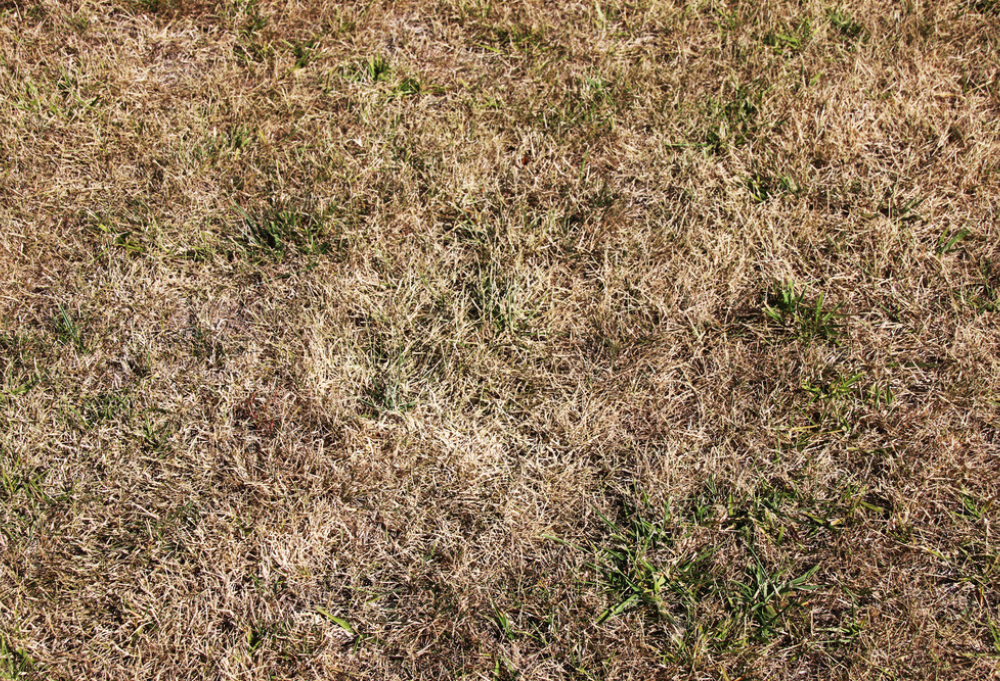
3. Thin or Bare Areas
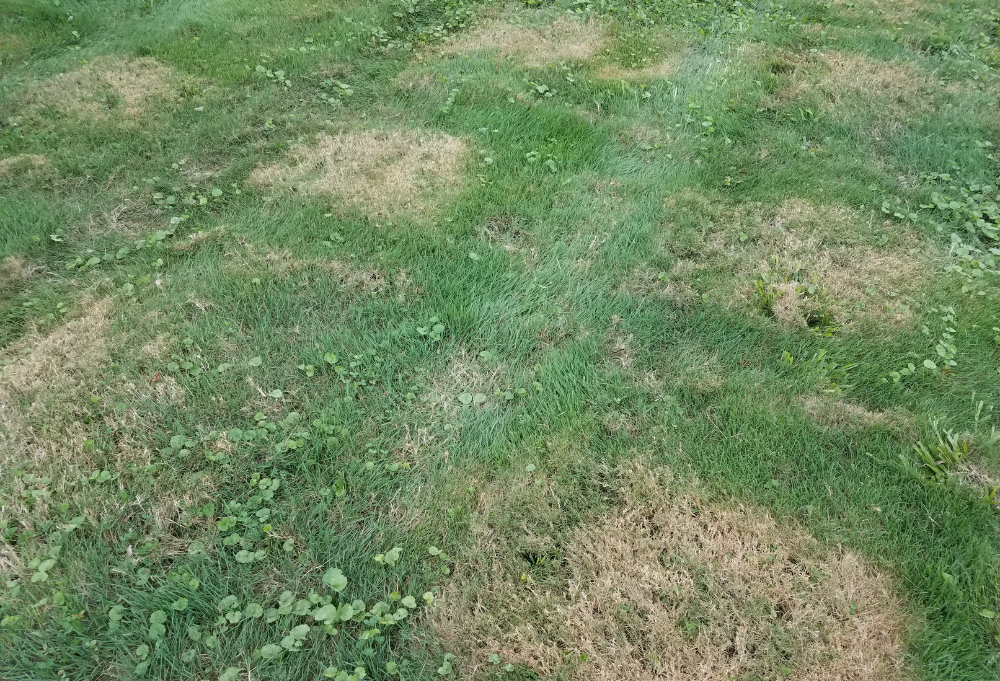
Grass that’s been trampled or outcompeted by weeds may begin to thin. Once bare patches appear, weed seeds are more likely to move in.
4. Spongy or Thatchy Feel
If your lawn feels springy underfoot, you might have excessive thatch buildup. A thin layer is okay, but anything over ½ inch can prevent water and nutrients from reaching the roots.
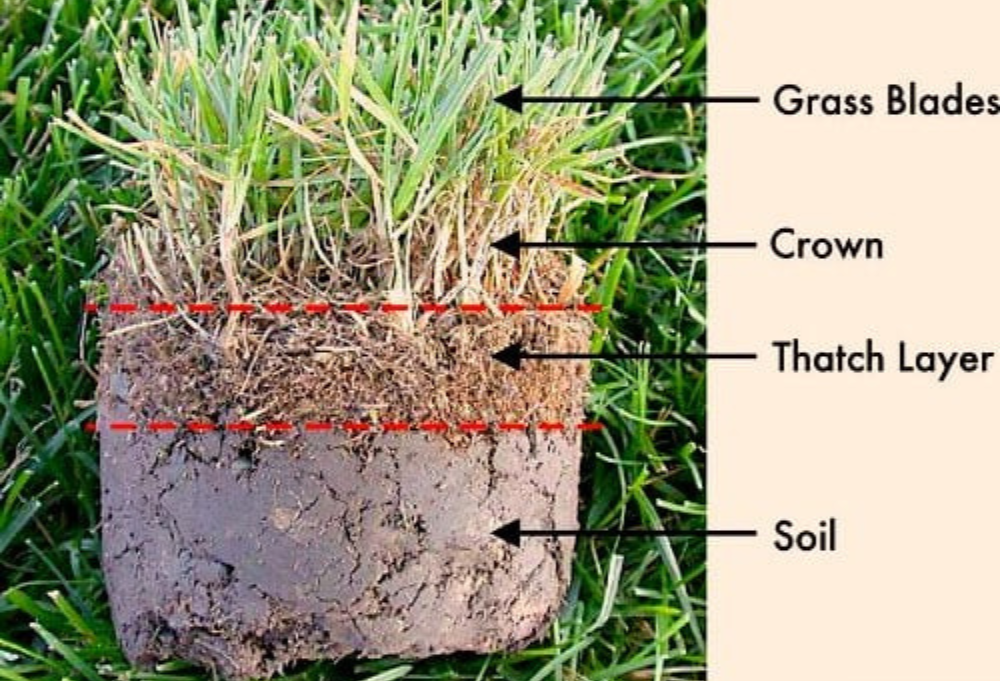
Image compliments of GardenMyths
5. Cracked or Hard Soil
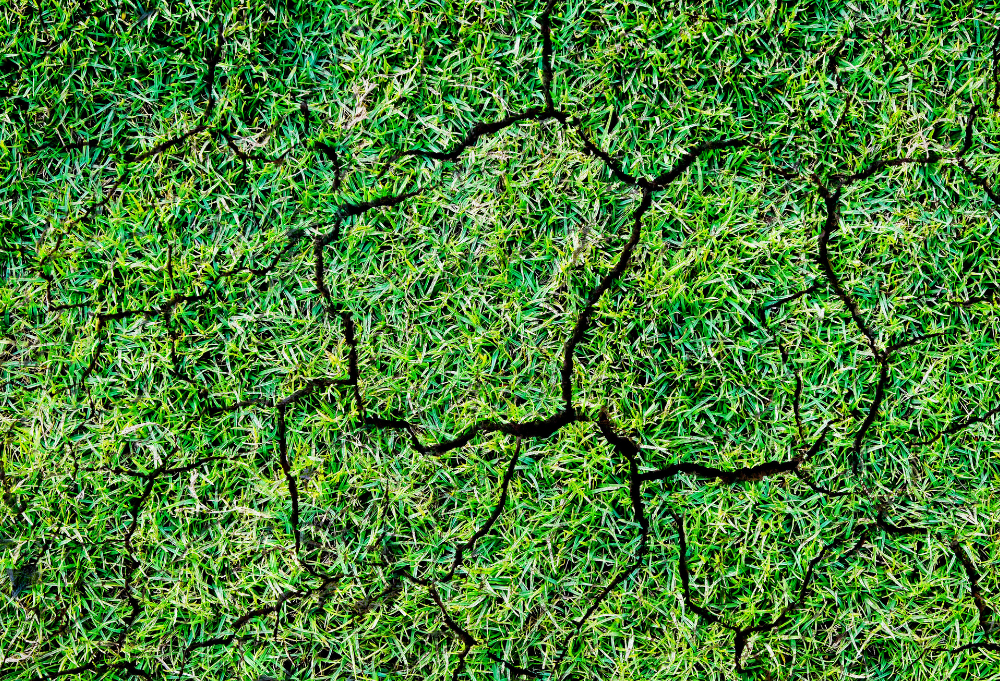
Visible cracking or soil that resists a garden trowel is a sure sign of compaction and dryness. Grass in these areas often has shallow roots and can’t thrive in summer heat.
What Causes Lawn Stress in July?
Several summer-specific issues can combine to stress your turf:
1. Underwatering or inconsistent irrigation
Many lawns don’t get enough water during Alberta’s hot spells—especially if watered during peak sun hours when most of it evaporates. Check out our blog for watering tips, “Lawn Watering Guidelines: Tips & Signs of Over & Underwatering“.
2. Heat stress
When daytime highs soar above 25°C and rainfall is scarce, cool-season grasses like Kentucky bluegrass can go dormant.
3. Compacted soil
Play areas, paths, and high-traffic zones can cause the soil to harden, restricting root growth and water absorption.
4. Nutrient deficiency
Lawns that haven’t been fertilized since spring may lack the nitrogen and other nutrients needed to stay green and resilient. If you don’t have time to fertilize your lawn, we can help! Learn about our lawn fertilizing services here.
How to Help a Stressed Lawn Recover
Thankfully, your lawn can bounce back—especially if you catch the stress early and apply the right solutions.
 Water Deeply and Infrequently
Water Deeply and Infrequently
Aim for about 1 to 1.5 inches per week, including rainfall. Water in the early morning (before 10 a.m.) to avoid evaporation and fungal disease. Avoid daily light watering—it promotes shallow roots. Learn more watering tips in our blog, “Lawn Watering Guidelines: Tips and Signs of Over and Underwatering“.
 Mow High
Mow High
Raise your mower blade to 2.5–3 inches. Taller grass shades the soil, helps retain moisture, and develops deeper roots. Learn more about the importance of mowing high in our blog, “Why Mowing High Matters“.
 Feed with Summer-Appropriate Fertilizer
Feed with Summer-Appropriate Fertilizer
Use a balanced fertilizer with controlled-release nitrogen to support steady growth without burning stressed grass. Avoid high-nitrogen products during heatwaves.
 Aerate Compacted Areas
Aerate Compacted Areas
Core aeration allows air, water, and nutrients to reach deeper into the soil. You can rent a machine or hire a pro to do it—July isn’t peak aeration season, but it can help in severely compacted spots. Learn more about our core aeration service here.
 Top Dress Thin or Bare Spots
Top Dress Thin or Bare Spots
Apply a thin layer of compost or topsoil mixed with grass seed to problem areas. Keep moist until established. This improves soil quality and encourages regrowth.
 Manage Thatch if Needed
Manage Thatch if Needed
If you have more than ½ inch of thatch, consider dethatching or using a liquid biological thatch reducer. This is typically a fall task, but early signs can be addressed before it worsens.
Should You DIY or Get Professional Help?
- If you’re seeing a few small brown patches or signs of light stress, start with DIY fixes: adjust watering, raise your mower blade, apply a summer-safe fertilizer, and spot-aerate.
- If your lawn looks widespreadly patchy, compacted, or thin, you might benefit from aeration, top dressing, or a seasonal lawn care service that offers tailored treatments.
You don’t have to commit to a full season package—start with a mid-summer weed control and fertilizer application or ask a local provider to assess your lawn’s condition. We have been caring for lawns around Calgary and Red Deer for over 30 years. Learn more about our lawn fertilizer and weed control services here.
Final Tip: Don't Wait Until Fall
Summer lawn stress won’t resolve itself. Acting now—while temperatures are still manageable—can mean the difference between a quick green-up and months of recovery.
Need help with your lawn this summer?
Request a free quote or give us a call today. Your lawn deserves it!

Recent Comments